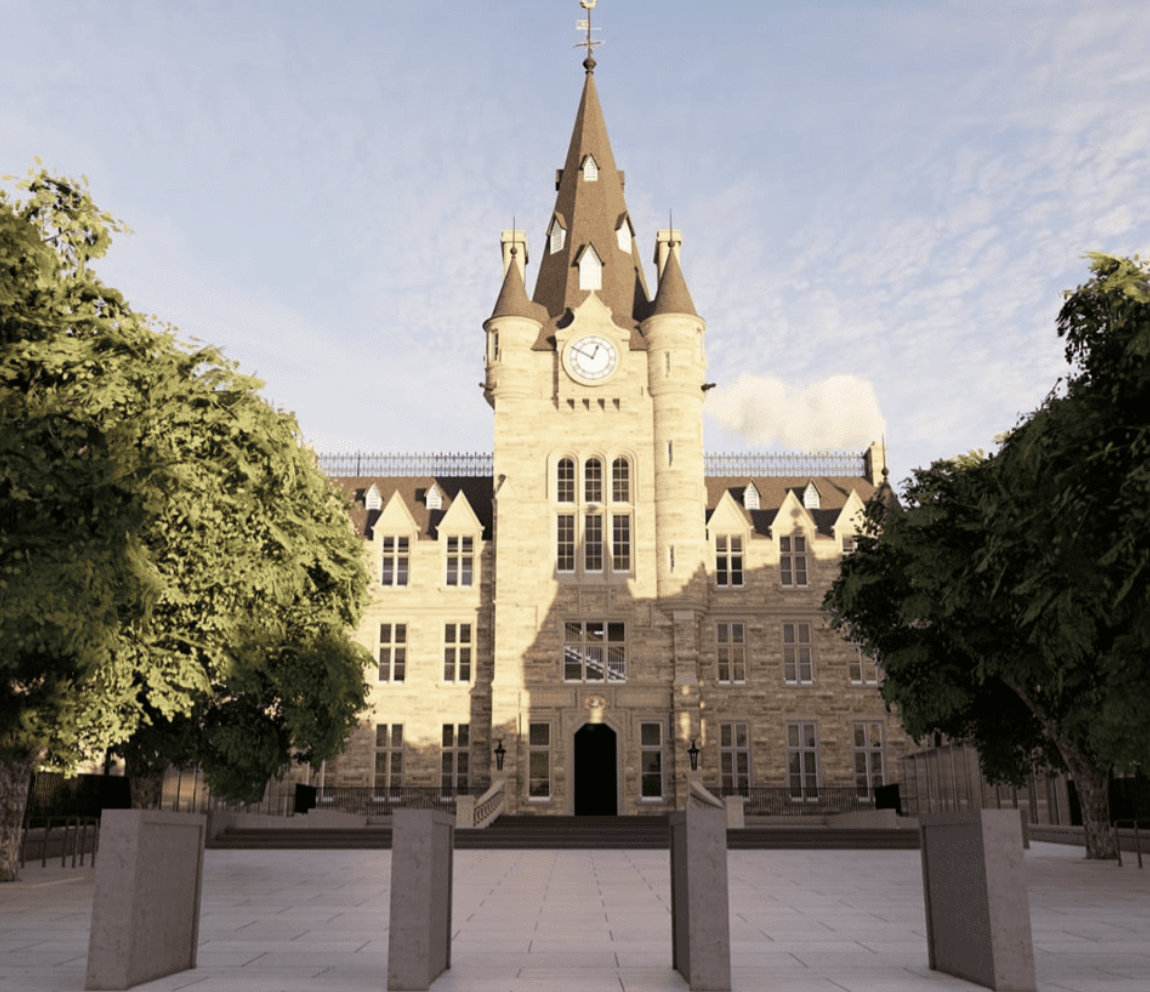
Within the University of Edinburgh, a group called the Edinburgh Futures Institute (EFI) is dedicated to solving the world’s most complex challenges. While I am in the Data and Artificial Intelligence Ethics cohort, other cohorts are working on different challenges such as Planetary Health, Education, and Circular Economy. During the induction lecture today, I met a guy in the Sustainable Land and Cities cohort. The post-graduate program at EFI brings together people from around the world to think and solve these challenges. I mean that literally, there are people from approximately 40 different countries in my current program
EFI brings together 21 schools across the University of Edinburgh and puts them into one global space. The program can be done online, in person, or both. EFI itself is housed in an extraordinary new building, the Old Royal Infirmary, right in the middle of Edinburgh. Alongside the students are researchers and companies, all collaborating through interdisciplinary lenses to produce a series of projects that address many of the day’s social, environmental, and economic concerns.
The mission of EFI was best summarized for me when, during the lecture, they showed what they call “The Futures Cone.” The Futures Cone is a tool or framework for exploring the future. It demonstrates that many alternative futures are always available to an organization beyond the official, projected future. As an exercise, the futures cone helps sort ideas about the future by time, likelihood, and desirability—these future range from the preferred to the preposterous and everything in between. The slide had the following headline:
“Every future is a potential future, including those we cannot even imagine.” – Voros, 2017
During the lecture, they discussed seeing situations from multiple perspectives. Chris Speed, Director of the EFI Program, showed these various pictures of everyday situations from various photographers. For example, a fight breaking out in the front yard of a neighborhood, a child sleeping on a sidewalk with an adult standing over them, etc. While he showed these pictures, he would point out how everyone in the photos has a unique perspective and, therefore, makes an individual decision. But to be part of the Futures Institute means being able to see all of these perspectives and somehow find a way to bring them all together.
One big takeaway for me was that the program is designed to be exceedingly difficult in its challenges, and there will be moments when a solution seems impossible. EFI is unapologetic for that. Instead, they challenge you to find a way to navigate that difficulty. That, in short, is the entirety of the program.
During the lecture, they discussed seeing situations from multiple perspectives. Chris Speed, Director of the EFI Program, showed these various pictures of everyday situations from various photographers. For example, a fight breaking out in the front yard of a neighborhood, a child sleeping on a sidewalk with an adult standing over them, etc. While he showed these pictures, he would point out how everyone in the photos has a unique perspective and, therefore, makes an individual decision. But to be part of the Futures Institute means being able to see all of these perspectives and somehow find a way to bring them all together.
One big takeaway for me was that the program is designed to be exceedingly difficult in its challenges, and there will be moments when a solution seems impossible. EFI is unapologetic for that. Instead, they challenge you to find a way to navigate that difficulty. That, in short, is the entirety of the program.
